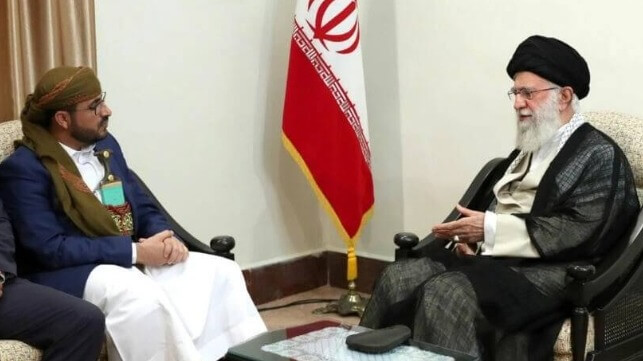Houthi Leaders Vow to Keep Up Attacks on Shipping

After a month of missile and drone attacks by Yemen's Houthi rebel group, the United States has convened a group of 10 partner nations to assist in restoring maritime security in the Red Sea - but industry players, defense experts and Houthi leaders question whether it will have the desired effect.
"The American-formed coalition is to protect Israel and militarize the sea without any justification, and will not stop Yemen from continuing its legitimate operations in support of Gaza," said Houthi spokesman Mohammed Abdel-Salam in a statement. "Whoever seeks to expand the conflict must bear the consequences of his actions."
The coalition, announced Monday, adds formal participation by French, British and Italian forces to the existing American presence. Some of the additions appear to be smaller contributions: Canada is sending three military personnel, and the UK is reassigning a destroyer already present in the Red Sea under the umbrella of the coalition.
The small island kingdom of Bahrain is the sole participant from within the region. Absent are Egypt, the region's leading naval power; Saudi Arabia, the best-resourced military in the Middle East; and the government of Yemen, which opposes the Houthi militia. China - which has the world's largest navy, the closest naval base, and the greatest economic stake - has also declined to join or assist. One U.S. official told Politico that Chinese warships are physically present but haven't responded to distress calls from merchant ships under Houthi attack.
The deterrent effect of the U.S. coalition remains to be proven. Without further escalation, Houthi fighters can impose a financial cost on Western forces by drawing down their interceptor inventories. The SM-2 missiles used by the U.S. Navy for long range air defense cost $2.1 million per round. The Houthi group's Iranian-produced Shahed drones cost about $20,000 each, and their cheapest designs come in at about $2,000.
“In terms of the ability to intercept Houthi drones, I think that there is certainly credible capability there, and we've seen that in how the USS Carney has been able to operate over the last few weeks,” naval warfare expert Sidharth Kaushal of the Royal United Services Institute told Time. "There is a question about the ability to replenish stocks, in particular air defense interceptors since vertical launch systems can't be replenished at sea."
Commercial vessel operators are taking a wait-and-see approach to maritime security in the Red Sea. A growing list of operators are routing their vessels via the Cape of Good Hope - a 1,900 nautical mile diversion - in order to ensure the safety of cargoes and crews. New additions this week include Equinor, Euronav and CMB.
“The Houthis will carry on, they love attention and they have a wide degree of support in the Arab world,” Chatham House analyst Farea Al-Muslimi told The Guardian. “So far nobody has died as a result of the Houthi attacks – if somebody is killed then there will likely have to be a response.”

that matters most
Get the latest maritime news delivered to your inbox daily.
So far, the U.S. and its allies have given no indication that they will intervene with kinetic measures to halt the attacks by force. The Pentagon has presented military options to leadership, according to Politico.
In 2016, Houthi forces attacked the destroyer USS Mason twice using Iranian-provided antiship missiles. The U.S. Navy used Tomahawk cruise missiles to destroy Houthi radar sites the next day.
